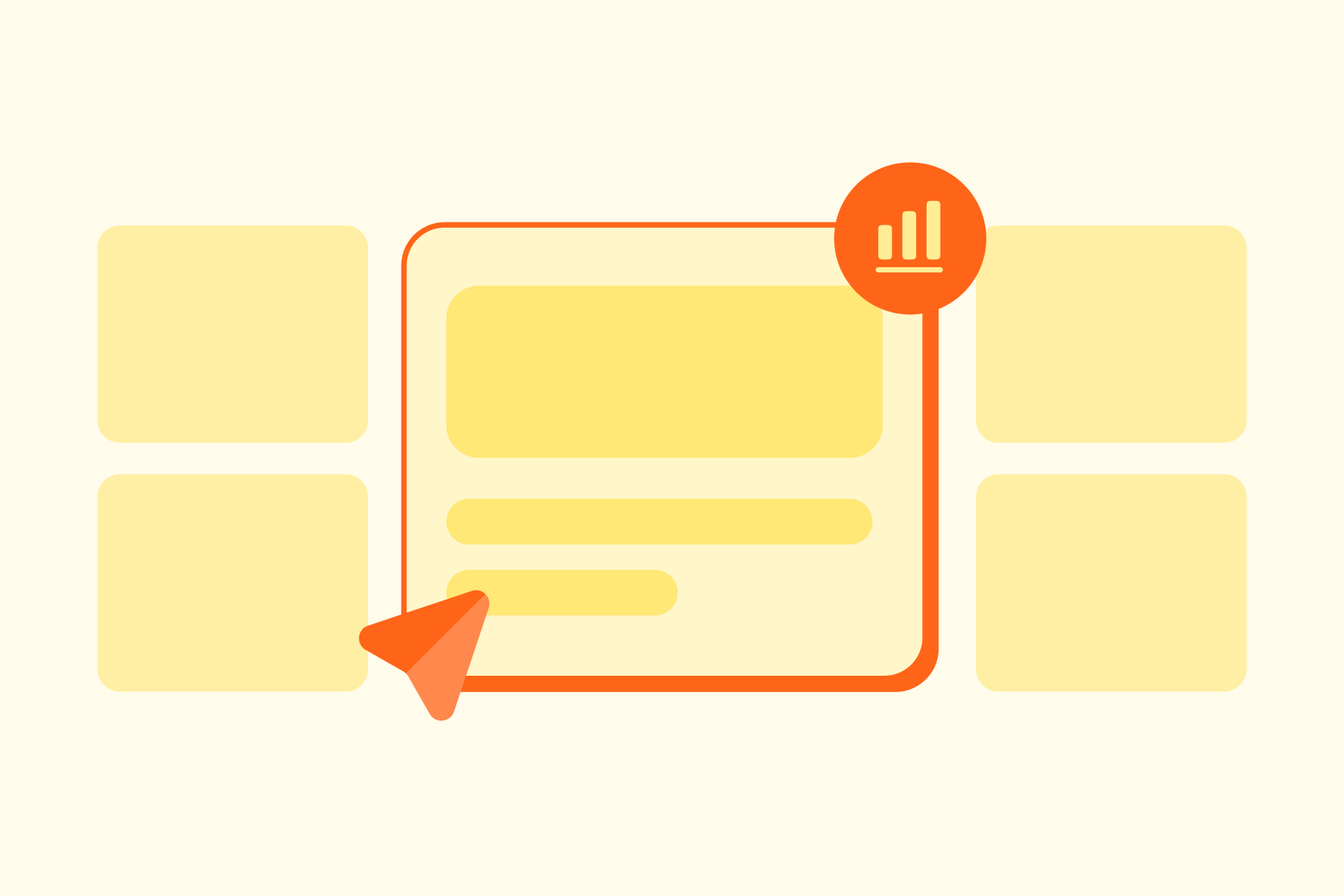How to Calculate Your SaaS PPC Budget: The Complete 2025 Planning Guide
Anastasiya Khvin
October 8, 2025

Most SaaS companies get their PPC budget completely wrong.
Not because they're bad at math. It's because they treat it like buying office chairs instead of what it really is - one of the biggest growth bets they'll make.
We've managed PPC campaigns for everyone from scrappy startups to companies like Mixpanel and ShipBob. The budgeting conversation? It always reveals how a company thinks about growth. After helping SaaS companies scale their paid acquisition by 4X (yeah, that actually happened with Orion Labs), we know that when you calculate your PPC budget, it's not just spreadsheet work - it's about understanding your business model, your market, and your guts.
Why Your PPC Budget Determines Your SaaS Growth Trajectory
Your PPC budget is a declaration of intent.
When we look at a company's ad spend, we can predict their growth trajectory within a quarter or two. Companies that treat PPC as an afterthought - tossing a few thousand at Google Ads "to test things out" - typically see meh results. Companies with strategy? They scale predictably.
The question shouldn't be "how much should we spend?" It should be "how much do we need to spend to hit our targets?" That shift changes everything.
Spending $50K, $100K, or more per month on ads feels scary. But underfunding your PPC campaign is worse than not running it at all - you end up with incomplete data, can't reach statistical significance, and make decisions based on noise instead of signal.
Understanding PPC Budget Basics Before You Calculate
The Real Cost of PPC Advertising Beyond Your Daily Budget
When people think about PPC cost, they think about media spend - money going directly to platforms like Google Ads, Microsoft, LinkedIn.
That's not your actual cost. You've got to factor in agency fees or in-house salaries (we're transparent at Aimers; clients see the full picture because our paid search management increases conversion rates by 210% for companies like Originality.AI). Plus landing page development, creative production, analytics tools, testing budget. Your total PPC investment runs 15-25% higher than pure ad spend.
One of our team's favorite sayings: "Marketing rarely fails because of low traffic. The real leak is often deeper in the funnel." We see this when running audits - companies spending $50K/month on ads but converting at 1% because their landing page is a mess.
How SaaS Customer Lifetime Value Changes Budget Allocation
If you're selling a $29/month product with an 18-month customer lifetime, your LTV is around $522. Enterprise software at $5K/month with a 3-year contract? You're looking at $180K in LTV.
These scenarios need completely different budget strategies. Higher LTV means you can be more aggressive - we've worked with SaaS companies comfortable spending $10K to acquire a customer because the lifetime value justifies it. Others panic at spending more than $100.
You need to know your numbers cold before you calculate a PPC budget.
Calculate Your PPC Budget: The Revenue-Based Method
This is how we help clients determine their PPC budget because it ties directly to business outcomes.
Start With Your Customer Acquisition Cost Targets
What can you afford to pay for a customer?
The standard SaaS rule: CAC recovered within 12 months; LTV to CAC ratio at least 3:1. If your average customer is worth $10K in lifetime value, you can spend up to $3,333 to acquire them. According to industry benchmarks, most successful SaaS companies operate with LTV to CAC ratios between 3:1 and 5:1, though this varies by business model and growth stage.
Early-stage companies often need worse ratios to gain market share. Competing against established players? You might accept a 2:1 ratio initially when the strategy is clear.
.webp)
Factor in Average Cost Per Click Across Your Target Keywords
You need to understand what clicks cost in your niche. "Project management software" might average $15 per click; "enterprise analytics platform" could be $45+.
Use Google Keyword Planner to estimate CPC ranges. Check SpyFu or SEMrush to see competitor bids. Run small test campaigns to validate. According to WordStream's 2025 benchmarks, the average cost per click across all industries is $5.26, though this varies dramatically by sector - from $1.60 for Arts & Entertainment to $8.58 for legal services.
Once you know your average cost per click, work backwards. If your CPC is $20 and your landing page converts at 5%, each conversion costs $400. If sales closes 25% of leads, your cost per customer is $1,600. This math tells you whether the channel makes sense. Want to run the numbers for your business? Our ad performance calculator can help you estimate your expected KPIs based on your budget and industry.
Calculate Based on Conversion Rate and Sales Cycle Length
Your conversion rates at each stage matter. Click to lead usually runs 2-10%. Lead to SQL hits 20-40%. SQL to closed customer lands between 15-30% for most B2B SaaS.
Multiply these together. If you're at 5% × 30% × 20%, that's a 0.3% click-to-customer rate. At $20 CPC, you're paying $6,667 per customer. Can your unit economics support that?
Determine Your PPC Budget Using the Goal-Driven Approach
Works great for companies with specific revenue targets.
Map PPC Goals to Pipeline Requirements
Start with your revenue goal. Let's say you want to add $2M in ARR this year.
Work backwards. At $50K average contract value, you need 40 new customers. At 20% close rate, you need 200 sales-qualified leads. At 30% lead-to-SQL rate, you need 667 marketing qualified leads. At 5% conversion rate, you need 13,340 clicks.
If your average CPC is $15, that's $200K in ad spend. Plus agency fees, creative, landing pages - call it $250K total. This is the conversation we have with every client. When we worked with ShipBob, we started by mapping their growth targets to pipeline requirements - that clarity helped us increase their conversions while improving lead quality.
Budget Allocation Across Campaign Types and Funnel Stages
You can't dump all your money into bottom-funnel search campaigns. We cover this in detail in our B2B SaaS PPC strategies guide, but here's the quick version.
.webp)
Early-stage companies skew heavier toward bottom-funnel. More mature companies can invest in upper-funnel for long-term pipeline. For context, SaaS companies typically allocate 8-10% of ARR to marketing, with high-growth companies spending even more agressively.
The Competitive Intelligence Method: How Much to Spend to Win
We've worked with SaaS companies entering crowded markets where competitors spend heavily. You can't be timid.
If the average company in your space spends $100K/month to maintain position, and you show up with $10K? You're bringing a knife to a gunfight.
Use competitive intelligence tools to understand what keywords competitors bid on and approximate ad spend levels. Then ask yourself - are we competing head-to-head or finding gaps? Budget accordingly.
Common PPC Budgeting Mistakes That Drain SaaS Marketing Budgets
We wrote an entire article about mistakes that waste your PPC budget, but let's hit the big ones here.
Underfunding Campaigns and Killing Data Collection
A company allocates $3K/month to Google Ads. Gets 200 clicks. Maybe 10 conversions. Then makes sweeping decisions about "what works." That's not data. That's noise.
To reach statistical significance, you need at minimum 100 conversions per variant. Testing ad copy, landing pages, and targeting? You need volume.
If you can't afford meaningful volume for at least 3 months, wait until you're properly funded.
Ignoring Cost Per Lead Variations Across Customer Segments
SMB leads might cost $50. Enterprise leads cost $500. But if the enterprise customer is worth 20X more, that's a good trade.
We see companies panic about high cost per lead in certain segments without looking at the full picture.They shift budget away from expensive channels that actually generate high-value customers.
When we managed Mixpanel's paid acquisition, we found their enterprise leads cost 8X more than SMB leads - but closed at twice the rate and had 15X higher LTV. The math was clear.
Setting a Daily Budget Without Monthly Context
If your daily budget is too conservative, the algorithm never escapes learning mode - you'll see limited delivery, poor placement, missed opportunities.
Set your daily budget based on monthly goals; allow flexibility for the algorithm to spend up to 2X on high-performing days. Think in terms of monthly budget, then divide by 30.4. Keep in mind that CPCs are rising faster than general inflation - with some data showing average annual increases of 11%+ in highly competitive industries.
Pro tip from managing campaigns for Uppbeat - front-load spending early in the month. If performance is strong, scale. If weak, you have time to adjust your budget.
Optimize Your PPC Budget Allocation Across Platforms Like Google Ads
Multi-channel is reality for most SaaS companies now.
When to Split Budget Between Search, Display, and Retargeting
Start with search. Always.
Search captures demand that already exists. For most B2B SaaS companies, Google Ads search campaigns should get first priority. People searching "inventory management software" are further along than someone scrolling LinkedIn.
Once search is funded properly, expand. Retargeting gets 10-15% of budget. Display/YouTube for awareness gets 15-20%. LinkedIn or other social gets 20-30% (B2B only). Experimental channels get 5-10%.
Don't sleep on Microsoft Advertising either - we've seen B2B SaaS companies get 20-30% lower CPCs on Bing compared to Google, especially for enterprise keywords.
Budget Planning for Multi-Touch Attribution Models
Most SaaS purchases involve 6-10 touchpoints. Someone clicks a Google ad. Visits three times via organic. Engages with a retargeting ad.Then converts through direct traffic. Which channel gets credit?
Using last-click attribution? You're probably over-investing in bottom-funnel. We reccommend position-based or data-driven attribution models - these give credit across the funnel and help you allocate your budget more intelligently. According to HubSpot's research on marketing budgets, companies using proper attribution see significantly better ROI from their marketing investments.
Expect 20-30% of your budget to go toward campaigns that don't show direct ROI in last-click models. But they're essential.
One thing we tell clients: even the best ad campaign can't save a broken landing page or bad analytics. We've seen companies burning through budget while their analytics setup was tracking conversions twice. Fix the foundation first.
Adjust Your PPC Budget Based on Performance Signals
Your budget responds to reality.
Key Metrics That Should Trigger Budget Reallocation
Keep an eye on return on ad spend by campaign, cost per acquisition trending versus target, impression share percentage, conversion rate changes, and sales cycle velocity.
If a campaign hits 5X ROAS with 40% impression share - meaning you're missing 60% of available traffic - add more money. If another campaign barely breaks even despite months of optimizaton? Shift that budget to winners.
Some campaigns deserve to scale. Some deserve to die. For more tactical advice on this, check out our guide on PPC campaign budget optimization.
Managing Your PPC Budget Effectively Through Growth Stages
Pre-product/market fit (under $1M ARR)? Keep budgets lean, $5-15K/month; focus on learning. Early growth ($1-10M ARR) means scaling winning channels - $25-100K/month. Scale stage ($10M+ ARR) requires multi-channel investment, $100K-$500K+/month.
.webp)
When Orion Labs came to us ready to scale, we increased their sales opportunities from paid campaigns by 60% in six months. By year two, it was a 4X increase. That happens by constantly adjusting your PPC budget based on what the data tells you.
Calculate a PPC Budget That Aligns With Your SaaS Business Model
Your business model dictates your budget strategy more than anything else.
Freemium vs. Enterprise: How Product Strategy Impacts Ad Spend
Freemium models need volume. If only 2-5% of free users convert to paid, you need massive top-of-funnel. Your PPC budget should favor lower CPC keywords, broader targeting, strong retargeting, and tolerance for higher initial CAC.
We've worked with freemium SaaS companies spending $200K/month to acquire users at $20 each - knowing that 3% will convert to $50/month plans. The math works over 12-18 months, but you need patience. Research from Insight Partners on SaaS marketing benchmarks shows that companies with lower average selling prices need to maintain higher volume acquisition strategies to hit growth targets.
Enterprise SaaS is different. You might spend $5K to get a single demo request. Because that could become a $100K+ contract. Budget focuses on high-intent, specific keywords regardless of cost; tight targeting; content-heavy nurture sequences.
Budget Management for Annual vs. Monthly Contracts
If you sell annual contracts, your cash conversion cycle is fast. Customer pays upfront. You have cash to reinvest in acquisition.
Monthly contracts mean longer CAC payback; you need to be more conservative. Plan your monthly budget with a 3-6 month view of cash flow.
Setting Your Monthly Budget and Adjusting Your PPC Spend
Calculate three numbers:
Minimum Viable Budget - lowest amount to get meaningful data, usually $5-10K/month for B2B SaaS, $15-25K for competitive markets.
Target Budget - what you'd spend if ROI is neutral to positive based on your goals.
Scale Budget - what you'd spend with strong performance to maximize growth, usually 2-3X your target.
Begin at your target budget. After 30 days, assess. CAC at or below target? Consider scaling. CAC 20%+ above target but improving? Maintain and tweak. Way above target with no improvement? Cut back to minimum viable.
Adjust based on performance every 30 days for the first quarter - then move to 45-60 day cycles.
Don't make budget decisions based on one week of data. PPC has volatility. Give changes time to prove themselves.
Maximize Your PPC ROI: When to Scale and When to Optimize
Avoiding Wasted Ad Spend Through Continuous Testing
Wasted ad spend comes from broad match keywords sending irrelevant traffic, ad copy that doesn't pre-qualify leads, landing pages that don't match ad message, poor targeting, and bidding strategies that overpay.
Continuous testing can reduce wasted spend by 20-40%. We run structured testing programs - one ad copy test, one landing page test, one targeting test per month minimum. A 10% increase in conversion rate reduces your CAC by 10%, which means your budget goes 10% further.
This is where our conversion rate optimization work shines. We've seen landing page improvements alone boost conversion rates by 50-100% - effectively cutting CAC in half without spending another dollar on ads.
The Budget Threshold for Successful PPC Campaign Performance
Below certain thresholds, PPC doesn't work well for most SaaS companies.
.webp)
If you can't hit these minimums, consider focusing on one channel, starting with organic and SEO to build a base, running concentrated sprint campaigns (3 months on, 3 months off), or partnering with an agency.
Your 2025 PPC Budget Planning Framework
Calculate your customer economics - LTV by segment, target CAC by segment, current close rates. Choose your calculation method: revenue-based for clear growth targets; goal-driven for working backward from pipeline; competitive if market dynamics dictate spend levels.
Determine your starting monthly budget; factor in learning phases (first 90 days), include non-media costs, plan for 20% contingency.
Set performance benchmarks. Define success metrics beyond CAC. Establish review cadences. Determine scale and cut triggers.
Commit to the timeframe. Minimum 90-day initial commitment. Monthly reviews. Quarterly planning.
PPC budget planning is spreadsheets and scenarios. But it's also the difference between fumbling in the dark and executing a growth strategy with confidence.
We've seen too many SaaS companies either spend too little and give up early or spend too much on the wrong things and burn through runway. The companies that win approach PPC spend strategically - as an investment with expected returns.
💡 Pro tip: Use our free Ad Performance Calculator to estimate leads, customers, and ROI based on your budget, CPC, and conversion rates. It’s the fastest way to validate your SaaS PPC budget before you spend a dollar.
Still not sure where to start? If you're wondering where your ad budget is silently leaking - or if you want to validate your calculations before committing serious money - reach out to us. We've done this enough times to spot the issues quickly and help you build a budget that actually works. Don't just take our word for it - check out what our clients say about working with us.











